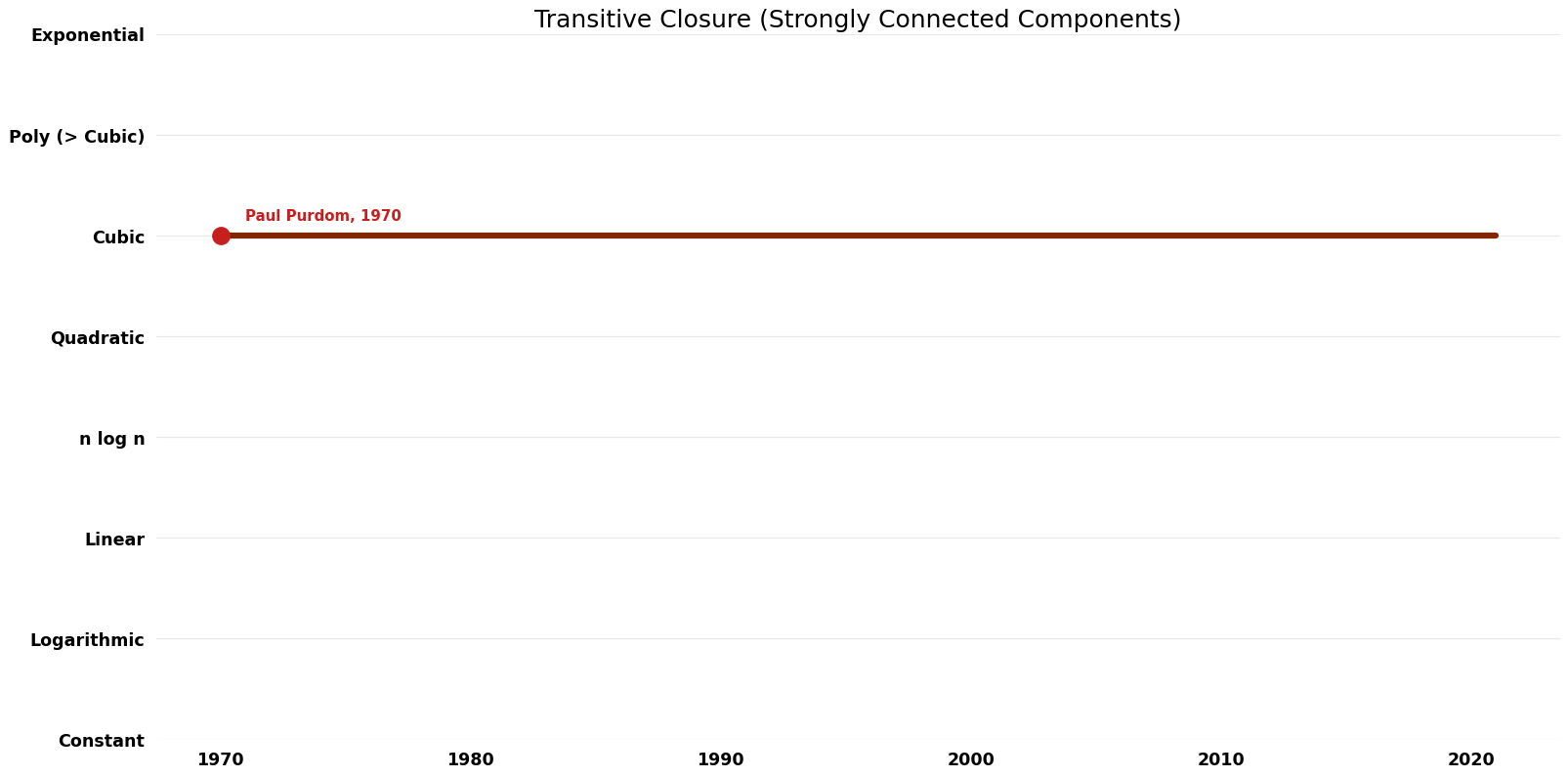Transitive Closure: Difference between revisions
Jump to navigation
Jump to search
(Created page with "{{DISPLAYTITLE:Transitive Closure (Strongly Connected Components)}} == Description == In this problem, we also want to compute the transitive closure of a graph. (Perhaps this should be a separate problem?) == Related Problems == Related: Strongly Connected Components, Maximum Strongly Connected Component, Strong Connectivity (dynamic), 2 Strong Components (dynamic), Connected Subgraph == Parameters == <pre>V: number of vertices E: number of e...") |
No edit summary |
||
| Line 10: | Line 10: | ||
== Parameters == | == Parameters == | ||
V: number of vertices | |||
E: number of edges | |||
E: number of edges | |||
== Table of Algorithms == | == Table of Algorithms == | ||
Revision as of 13:02, 15 February 2023
Description
In this problem, we also want to compute the transitive closure of a graph. (Perhaps this should be a separate problem?)
Related Problems
Related: Strongly Connected Components, Maximum Strongly Connected Component, Strong Connectivity (dynamic), 2 Strong Components (dynamic), Connected Subgraph
Parameters
V: number of vertices
E: number of edges
Table of Algorithms
| Name | Year | Time | Space | Approximation Factor | Model | Reference |
|---|---|---|---|---|---|---|
| Paul Purdom | 1970 | $O(V^{2}+VE)$ | $O(V^{2})$ | Exact | Deterministic | Time & Space |


